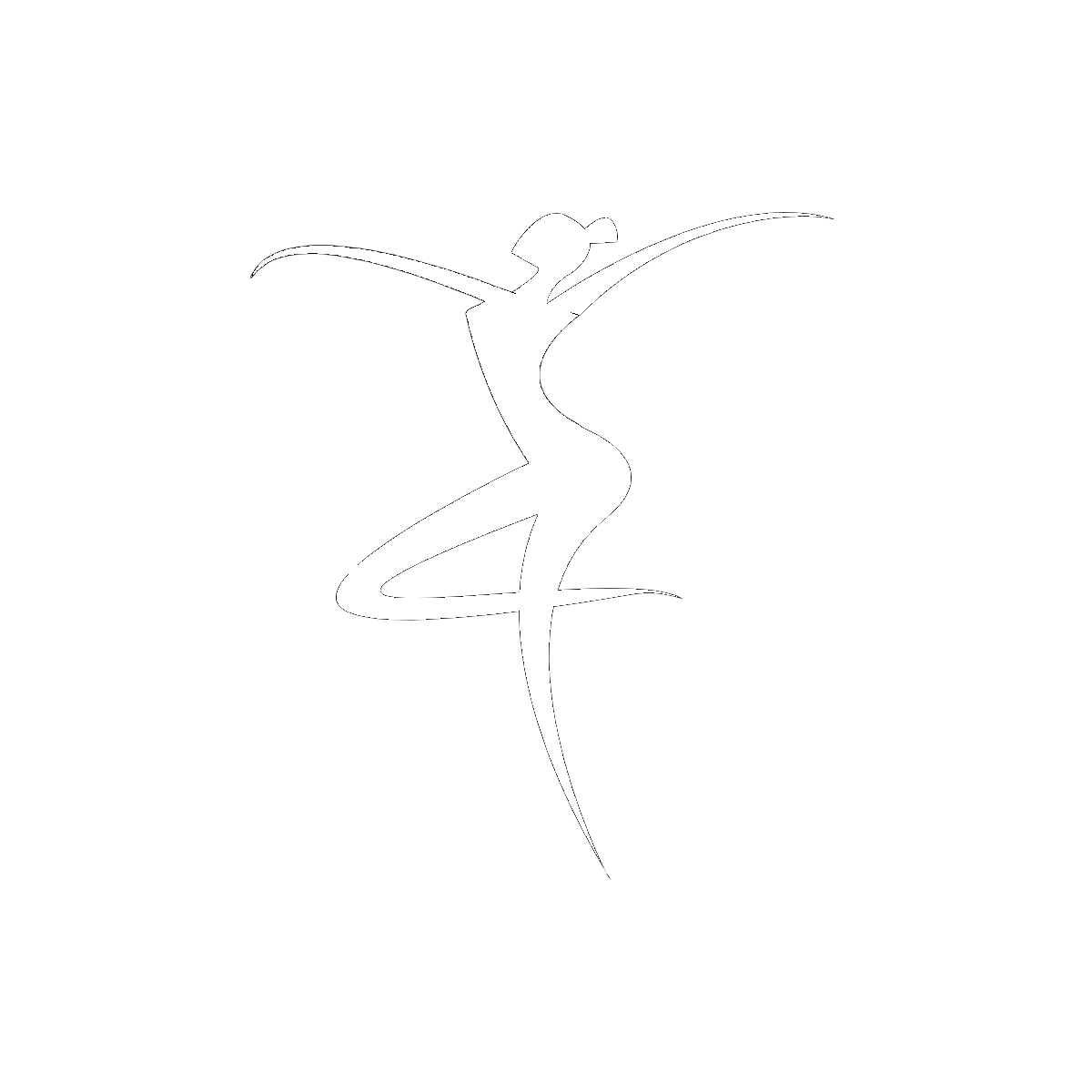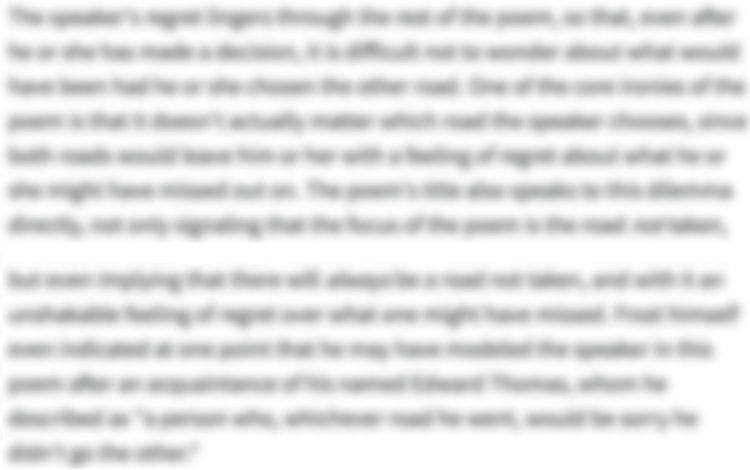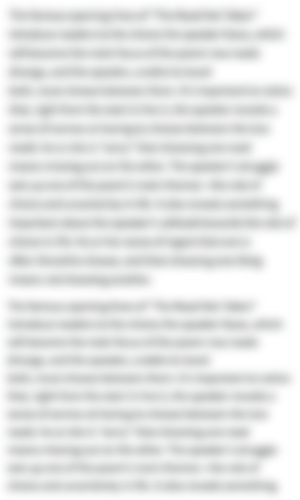The Full Text of “The Harlem Dancer”
1Applauding youths laughed with young prostitutes
2And watched her perfect, half-clothed body sway;
3Her voice was like the sound of blended flutes
4Blown by black players upon a picnic day.
5She sang and danced on gracefully and calm,
6The light gauze hanging loose about her form;
7To me she seemed a proudly-swaying palm
8Grown lovelier for passing through a storm.
9Upon her swarthy neck black shiny curls
10Luxuriant fell; and tossing coins in praise,
11The wine-flushed, bold-eyed boys, and even the girls,
12Devoured her shape with eager, passionate gaze;
13But looking at her falsely-smiling face,
14I knew her self was not in that strange place.
-
“The Harlem Dancer” Introduction
-
-
“The Harlem Dancer” Summary
-
-
“The Harlem Dancer” Themes
-

Perception vs. Reality
- See where this theme is active in the poem.
-

Human Dignity and Black Beauty
- See where this theme is active in the poem.
-
-
Line-by-Line Explanation & Analysis of “The Harlem Dancer”
-
Lines 1-2
Applauding youths laughed with young prostitutes
And watched her perfect, half-clothed body sway; -
Lines 3-4
Her voice was like the sound of blended flutes
Blown by black players upon a picnic day. -
Lines 5-6
She sang and danced on gracefully and calm,
The light gauze hanging loose about her form; -
Lines 7-8
To me she seemed a proudly-swaying palm
Grown lovelier for passing through a storm. -
Lines 9-10
Upon her swarthy neck black shiny curls
Luxuriant fell; -
Lines 10-12
and tossing coins in praise,
The wine-flushed, bold-eyed boys, and even the girls,
Devoured her shape with eager, passionate gaze; -
Lines 13-14
But looking at her falsely-smiling face,
I knew her self was not in that strange place.
-
-
“The Harlem Dancer” Symbols
-

The Palm Tree
- See where this symbol appears in the poem.
-
-
“The Harlem Dancer” Poetic Devices & Figurative Language
-
Assonance
- See where this poetic device appears in the poem.
-
Alliteration
- See where this poetic device appears in the poem.
-
Consonance
- See where this poetic device appears in the poem.
-
Simile
- See where this poetic device appears in the poem.
-
Metaphor
- See where this poetic device appears in the poem.
-
Enjambment
- See where this poetic device appears in the poem.
-
Colloquialism
- See where this poetic device appears in the poem.
-
-
“The Harlem Dancer” Vocabulary
Select any word below to get its definition in the context of the poem. The words are listed in the order in which they appear in the poem.
- Sway
- Blended Flutes
- Picnic Day
- Gauze
- Swarthy
- Devoured
- Shape
Sway-
- See where this vocabulary word appears in the poem.
-
Form, Meter, & Rhyme Scheme of “The Harlem Dancer”
-
Form
-
Meter
-
Rhyme Scheme
-
-
“The Harlem Dancer” Speaker
-
-
“The Harlem Dancer” Setting
-
-
Literary and Historical Context of “The Harlem Dancer”
-
-
More “The Harlem Dancer” Resources
-
External Resources
-
The Poem Out Loud — Listen to a reading of "The Harlem Dancer."
-
Electronic Edition of Harlem Shadows — An open-source edition of Harlem Shadows, McKay's groundbreaking 1922 volume in which "The Harlem Dancer" was reprinted. This link includes useful critical commentary, textual history, the original 1917 text, and other resources.
-
The Harlem Renaissance — A short post about the Harlem Renaissance by the Smithsonian National Museum of African American History & Culture.
-
McKay's Life and Work — A detailed but brief look at McKay's life and literary career, including information about his publication history and critical reception.
-
"Black Capital: Harlem in the 1920s" — A digital look at the New York State Museum's exhibition on the rich culture of 1920s Harlem.
-
-
LitCharts on Other Poems by Claude McKay
-










